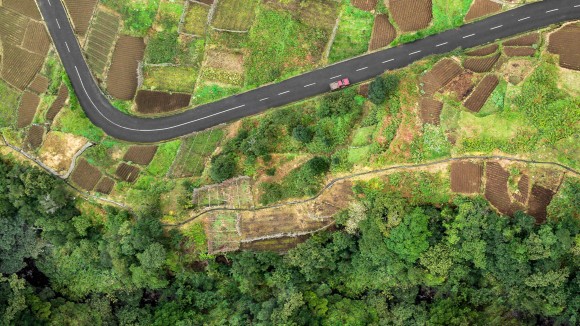
Land-cover change can have profound impacts on the Earth system. Unsustainable land use, driven by urban and agricultural expansion, not only causes important impacts on climate but also leads to ecosystem and environmental degradation. Here, we bring together a collection of articles published in Nature Portfolio journals on the trends and impacts of land-use change.

Land-use-induced ecosystem reduction and degradation has profound impacts on the Earth system. Proceeding with currently unsustainable land use may jeopardize climate and ecosystem restoration targets.
Editorial 5 Jul 2021 Nature Geoscience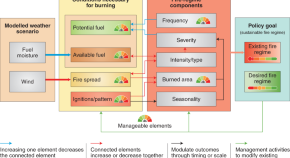
Globally, land- and fire-management policies have counterproductively caused cascading ecosystem changes that exacerbate, rather than mitigate, wildfires. Given rapidly changing climate and land-use conditions that amplify wildfire risk, a policy shift to adaptive management of fire regimes is urgently needed.
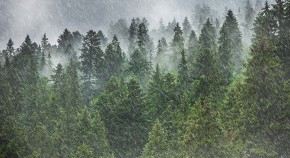
Reforestation of agricultural lands in Europe increases local and downwind summer rainfall, according to a new analysis of rain-gauge measurements from across the continent. Realistic levels of tree planting could therefore mitigate future droughts expected with climate change.
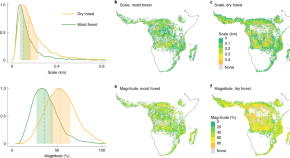
Fire exacerbates forest degradation in the forest edge zones in Africa, increasing the carbon deficit caused by forest fragmentation, according to analyses of high-resolution satellite data on forest cover and biomass.
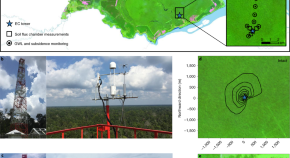
During a period of drought, an intact tropical peatland in Indonesia released half the amount of greenhouse gases as was released from a degraded site, according to a direct comparison of eddy covariance measurements at a pair of peatland sites in Sumatra.
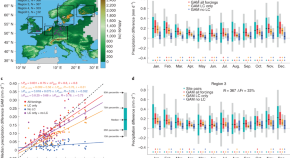
Forestation over Europe triggers substantial local and downwind precipitation changes, according to results from an observation-based continental-scale statistical model.
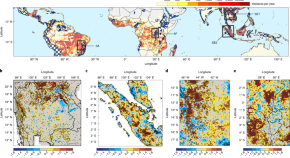
Deforestation causes elevation-dependent warming over tropical mountain regions, according to high-resolution climate simulations.
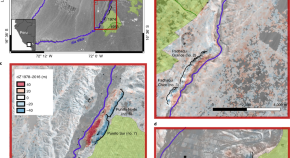
Slow-moving landslides in two valleys in Peru were initiated by irrigation programmes in the region, suggest analyses of 40 years of satellite data.
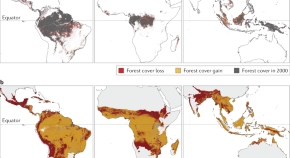
Deforestation and reforestation cause dramatic changes to tropical ecosystems, including underlying soil properties and their corresponding ecosystem services. In this Review, the impacts of this land-use change on soils and their functions are discussed.
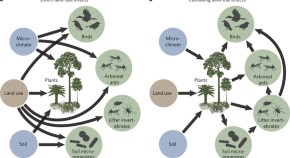
Direct and cascading land-use effects alter biomass and species richness of taxa across trophic levels ranging from microorganisms to birds in a multi-taxon research initiative in Sumatra, Indonesia.
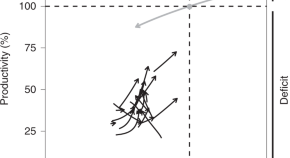
Analysing changes in grasslands and savannahs following agricultural abandonment, the authors show that even after more than 90 years, plant diversity and productivity recovered by only 73% and 53%, respectively.
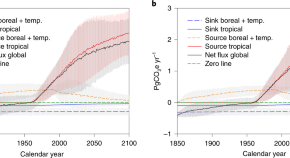
Natural peatlands accumulate carbon but land-use change and drainage leads to emission of GHGs from peatlands. Loss of natural peatland area globally has shifted the peatland biome from a sink to a source of carbon, but restoration of drained peatlands could make them carbon neutral.
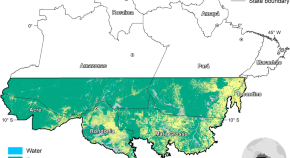
Deforestation in the Amazon region has suggested to influence precipitation in a non-linear way. Here, the authors show that forest loss is associated with decreasing precipitation after a scale-dependent threshold is crossed, which can cause stress on agriculture if deforestation is expanded.
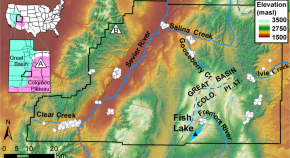
Indigenous farming practices in the Basin-Plateau Region of the western USA influenced high-elevation forest fire regimes, according to sedimentary archives, tree rings and archeological data

Tropical deforestation rates are linked to large-scale land investments, according to georeferenced land deal records and remote sensing of forest loss over the past two decades.
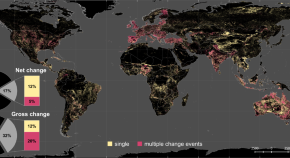
Quantifying land use change is critical in tackling global challenges related to food, climate and biodiversity. Here the authors show that land use change has affected 32 % of the global land area in six decades (1960- 2019) by combining multiple open datasets to create the HIstoric Land Dynamics Assessment +.
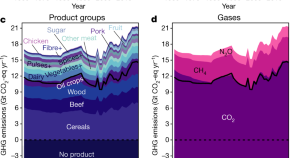
Trends in the rate of region- and sector-specific land-use greenhouse gas emissions in 1961–2017 show an acceleration of about 20% per decade after 2001.
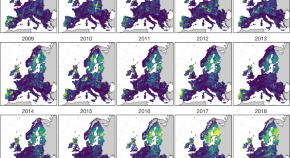
Fine-scale satellite data are used to quantify forest harvest rates in 26 European countries, finding an increase in harvested forest area of 49% and an increase in biomass loss of 69% between 2011–2015 and 2016–2018.
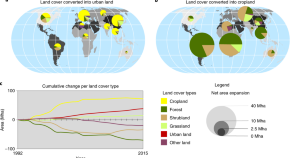
Urban expansion displaces agricultural land elsewhere, indirectly causing loss of natural land cover. A global study finds that this impact is more substantial than previously thought.
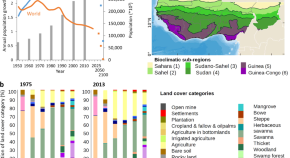
Land cover change has accelerated in West Africa between 1975 and 2013 as human-dominated land area more than doubled, suggest analyses of Landsat based land cover data sets.
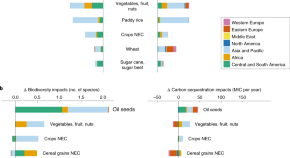
Combining biophysical and economic models, the authors show that the impacts of land use on bird biodiversity and carbon sequestration have increased over the years 2000–2011, with cattle farming being a major driver of biodiversity loss.